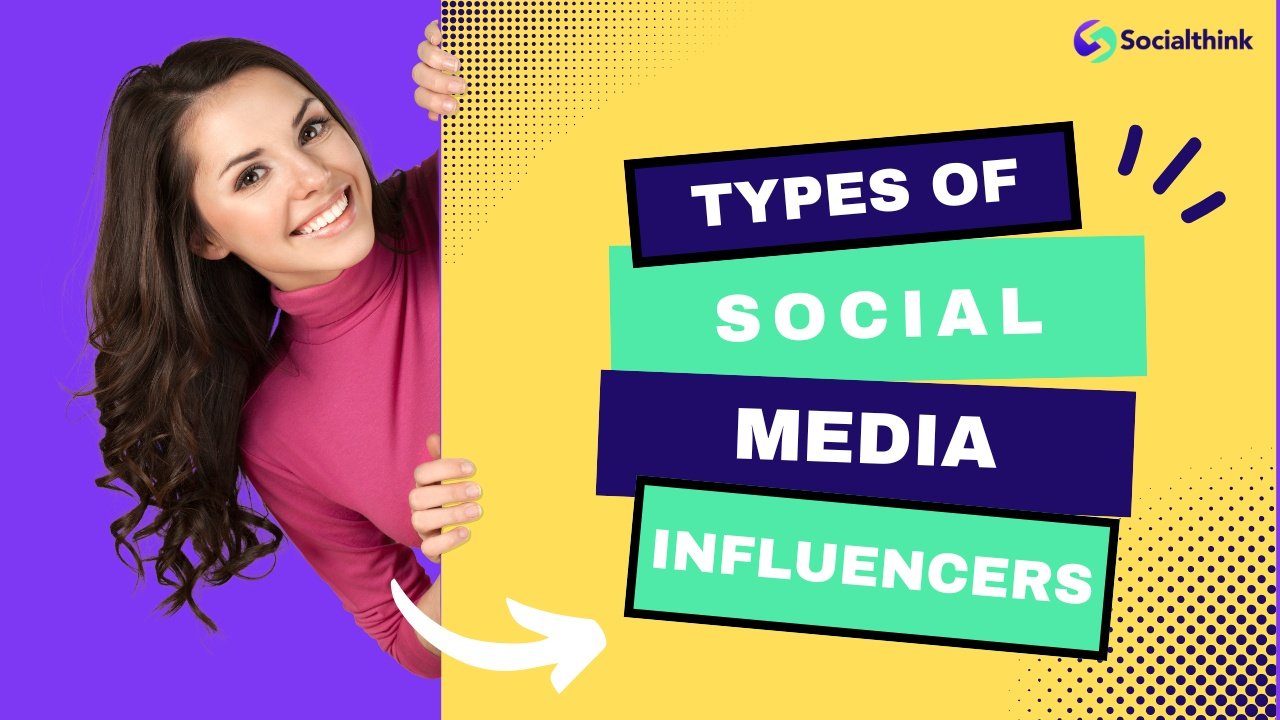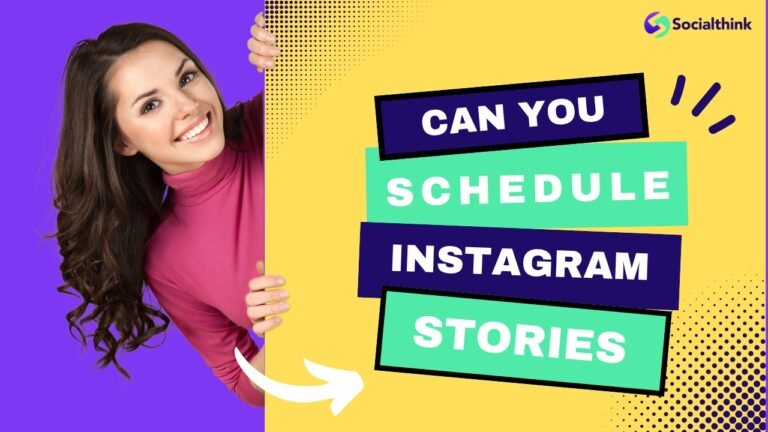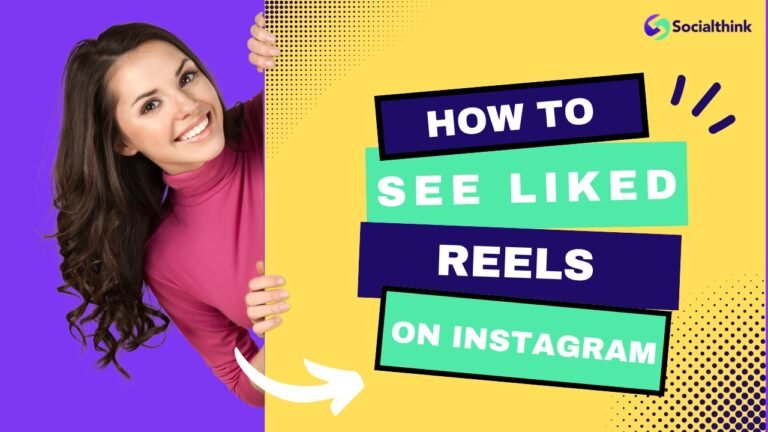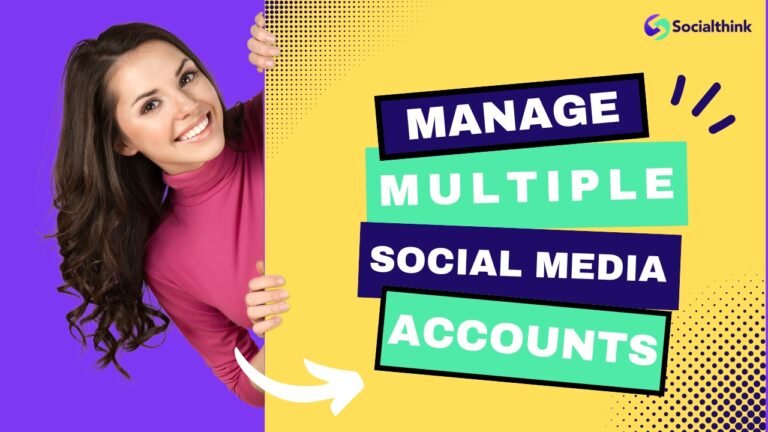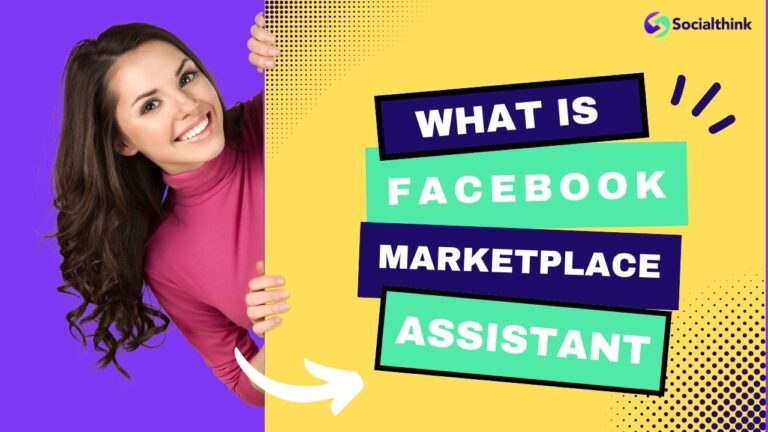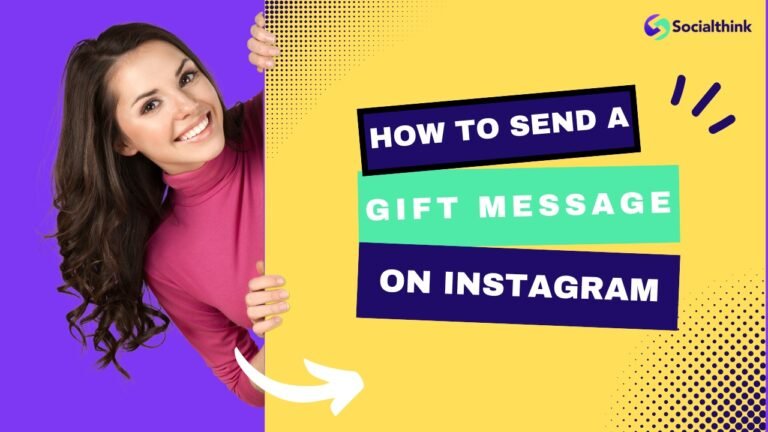Types of Social Media Influencers 2024: Mega, Macro, Nano & Micro
Social media influencers have become an integral part of digital marketing strategies for brands across industries.
As a leading social media strategy and analytics firm, Social Think understands the importance of partnering with the right types of influencers to achieve your business goals.
In this comprehensive guide, we’ll explore the different types of social media influencers and how to choose the best fit for your brand.
What Are Social Media Influencers?

Social media influencers are individuals who have built a significant following on social media platforms by creating engaging content in a specific niche. They have the power to influence their audience’s opinions, preferences, and purchase decisions. Influencers are often seen as trusted sources of information and recommendations by their followers.
How Social Media Influencers Gain Popularity?
Influencers gain popularity by consistently creating high-quality, relevant content that resonates with their target audience. They build trust and credibility by sharing their expertise, experiences, and authentic opinions. As their following grows, they become recognized as thought leaders or trendsetters in their niche.
Why Do Brands Partner With Social Media Influencers?
Brands collaborate with influencers to tap into their engaged audience and boost brand awareness, credibility, and sales. Influencer marketing allows brands to reach their target audience in a more authentic and relatable way compared to traditional advertising.
Partnering with the appropriate influencers enables brands to effectively convey their message and establish enduring connections with their potential customers.
Types of Social Media Influencers
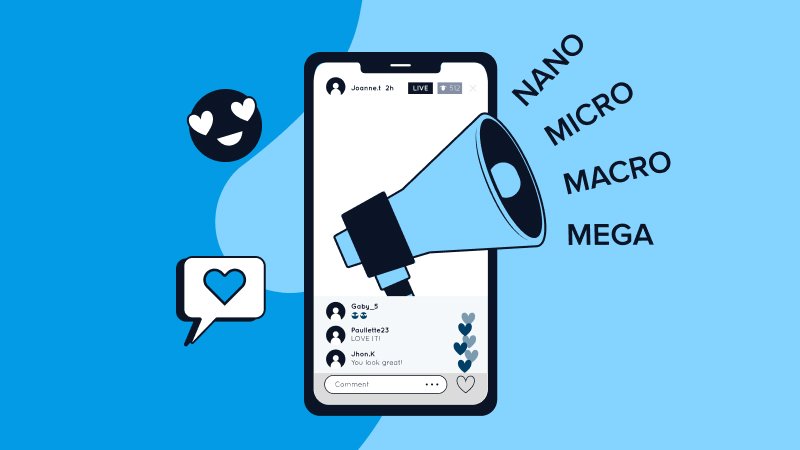
By Follower Count
Influencers can be categorized based on their follower count, which indicates the size of their audience and their potential reach.
Here are five categories based on follower count:
- Nano Influencers (1K-10K followers): Nano influencers have a relatively small but highly engaged following. They often have a strong personal connection with their audience and are known for their authenticity and niche expertise. Nano influencers are a cost-effective option for brands looking to target a specific audience.
- Micro-influencers (10K-100K followers): Micro-influencers have a larger following than nano-influencers but still maintain a high level of engagement. They are often considered experts in their niche and have a loyal, trusting audience. Micro-influencers are ideal for brands seeking targeted campaigns with high engagement rates.
- Mid-Tier Influencers (100K-500K followers): Mid-tier influencers have a substantial following and are often recognized as influential figures in their niche. They have a broader reach than micro-influencers while still maintaining a strong connection with their audience. Mid-tier influencers are suitable for brands looking to increase their visibility and reach a wider audience.
- Macro Influencers (500K-1M followers): Macro influencers have a large, diverse following and are often well-known personalities in their industry. They have significant influence over their audience and can drive substantial brand awareness. However, their engagement rates may be lower compared to micro and mid-tier influencers.
- Mega Influencers (1M+ followers): Mega influencers are celebrities, public figures, or social media stars with an enormous following. They can reach a massive diverse audience and significantly boost brand visibility and social media presence.
Take away:
- Micro-influencers have a smaller following and do not possess celebrity status in their particular niche but often have a more engaged audience interested in their niche content.
- Macro influencers strike a balance between celebrity status and relatability, offering brands exclusivity and professionalism in influencer content creation.
- Collaborating with mega influencers requires a substantial budget and may result in lower engagement rates.
By Content Niche
- Fashion Influencers: Fashion influencers create content related to clothing, accessories, and style trends. They often showcase their style, provide fashion tips, and collaborate with fashion brands. Examples include Chiara Ferragni and Aimee Song.
- Beauty Influencers: Beauty influencers focus on makeup, skincare, and hair care content. They share tutorials, product reviews, and beauty tips with their followers. Notable beauty influencers include Huda Kattan and James Charles.
- Fitness Influencers: Fitness & Wellness influencers promote a healthy lifestyle through exercise, nutrition, and wellness content. They often share workout routines, healthy recipes, and motivational posts. Examples include Kayla Itsines and Joe Wicks.
- Food Influencers: Food influencers create content centered around cooking, baking, and dining experiences. They share recipes, restaurant reviews, and food photography with their followers. Popular food influencers include Jamie Oliver and Rosanna Pansino.
- Travel Influencers: Travel influencers share their adventures, travel tips, and destination recommendations with their audience. They often showcase stunning photography and provide insights into different cultures and experiences. Examples include Murad and Nataly Osmann (Follow Me To) and Jack Morris (Do You Travel).
- Gaming Influencers: Gaming influencers create content related to video games, including gameplay, reviews, and live streams. They often have a dedicated following within the gaming community. Notable gaming influencers include PewDiePie and Ninja.
- Tech Influencers: Tech influencers share their knowledge and opinions on the latest technology, gadgets, and digital trends. They provide product reviews, comparisons, and insights into the tech industry. Examples include Marques Brownlee (MKBHD) and Linus Sebastian (Linus Tech Tips).
- Parenting Influencers: Parenting influencers create content related to pregnancy, child-rearing, and family life. They share their experiences, offer advice, and provide support to their fellow parents. Popular parenting influencers include Louise Pentland (SprinkleofGlitter) and Anna Whitehouse (Mother Pukka).
- Business and Finance Influencers: Business and finance influencers share insights, tips, and strategies related to entrepreneurship, investing, and personal finance. They aim to educate and inspire their audience to make informed financial decisions. Examples include Gary Vaynerchuk and Ramit Sethi.
- Lifestyle Influencers: Lifestyle influencers create content that encompasses various aspects of their daily lives, including fashion, beauty, travel, food, and home decor. They share their experiences and inspire their followers to live their best lives. Notable lifestyle influencers include Aimee Song and Camila Coelho.
By Platform
- Facebook Influencers: Facebook influencers have built a significant following on the platform and engage with their audience through posts, videos, and live streams. They often have a strong presence in niche communities and groups.
- Instagram Influencers: Instagram influencers leverage the visual nature of the platform to create engaging content, including photos, videos, and Instagram Stories. They often have high engagement rates and are popular among younger audiences. Brands looking to increase their Instagram reach organically can benefit from partnering with Instagram influencers who have a strong presence and engaged following on the platform.
- YouTube Influencers: YouTube influencers, also known as YouTubers, create video content on their channels. They cover a wide range of topics and often have dedicated subscriber bases. YouTube influencers are known for their longer-form content and high engagement through comments and likes.
- TikTok Influencers: TikTok influencers create short-form video content that often goes viral on the platform. They are known for their creativity, humor, and ability to start trends. TikTok influencers have gained popularity among younger generations.
- Twitter Influencers: Twitter (now X) influencers engage with their followers through tweets, retweets, and conversations. They often share news, opinions, and insights related to their niche. Twitter influencers are known for their ability to start and participate in trending discussions.
- Blog Influencers: Blog influencers create long-form content on their websites or blogs. They often provide in-depth insights, reviews, and tutorials related to their niche. Blog influencers have a loyal readership and are known for their expertise and authenticity.
Other Types
- Celebrity Influencers: Celebrity influencers are well-known public figures who have gained a following due to their fame. They often have a massive reach and can significantly boost brand visibility. However, their engagement rates may be lower compared to other types of influencers.
- Industry Expert Influencers: Industry expert influencers are recognized professionals in their field who share their knowledge and insights on social media. They are often sought after for their expertise and can provide valuable credibility to brands in their industry.
- Employee Influencers: Employee influencers are company employees who promote their employer’s brand on social media. They provide an authentic, inside look at the company culture and can help attract talent and build trust with customers.
- Virtual Influencers: Virtual influencers are computer-generated characters designed to mimic real-life influencers. They are created by brands or agencies and are used to promote products or services uniquely and creatively.
How to Measure the ROI Of Influencer Collaborations?
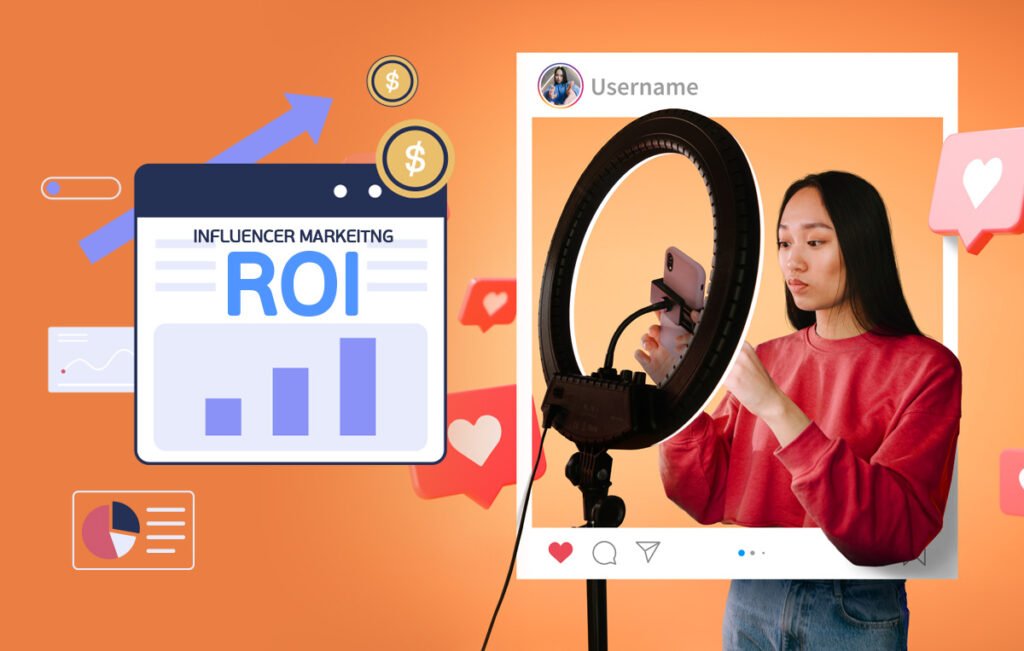
Measuring the return on investment (ROI) of influencer collaborations is important to determine the success of your social media campaigns.
Some key metrics to consider include:
- Engagement rate: The level of interaction (likes, comments, shares) on sponsored content compared to the influencer’s typical posts.
- Reach: The number of people who saw the sponsored content.
- Conversions: The number of sales, sign-ups, or other desired actions generated from the influencer’s content.
- Brand sentiment: The overall perception and sentiment towards your brand following the influencer collaboration.
Are Influencer Collaborations Worth the Investment?
Influencer collaborations can be highly effective when executed strategically. According to a report by the Influencer Marketing Hub, businesses earn an average of $5.78 for every $1 spent on influencer marketing. However, the success of your campaigns depends on choosing the right influencers, setting clear goals, and measuring performance.
How to Choose the Right Type of Social Media Influencers For Your Brand?

Picking the right social media influencers for your brand is key to a successful marketing campaign.
Here’s how you can make sure you’re choosing wisely:
- Start Looking For Influencers on the Right Social Media Platform: Consider which social media platforms your target audience is most active on and focus your search for influencers there. Each platform has its unique features, audience demographics, and content formats, so choose the one that aligns best with your brand and campaign goals.
- Study the Influencer’s EAT: EAT stands for Expertise, Authority, and Trustworthiness. Evaluate potential influencers based on their knowledge and credibility within their niche, the quality of their content, and the trust they have built with their audience. Collaborating with influencers who have a strong EAT can lend credibility to your brand.
- Analyze the Influencer’s Audience: Ensure that the influencer’s audience aligns with your target market. Look at factors such as age, location, interests, and engagement levels. You want to partner with influencers whose followers are likely to be interested in your products or services.
- Choose the Right Type of Influencer For Each Objective: Different types of influencers serve different purposes. For example, if your goal is to increase brand awareness, collaborating with macro or mega influencers may be effective. If you’re looking to drive engagement and conversions, micro or nano influencers with highly engaged audiences may be a better fit.
FAQ’s:
How Many Followers Do You Need to Be An Influencer?
There is no set number of followers required to be considered an influencer. Nano influencers can have as few as 1,000 followers, while mega influencers have over a million. The most important factors are the quality of content, engagement rates, and influence within a specific niche.
How Do Brands Find and Work With Influencers?
Brands can find influencers through social media platforms, influencer marketing agencies, or influencer marketing platforms. Once a suitable influencer is identified, brands typically reach out with a collaboration proposal, discussing campaign goals, deliverables, and compensation.
How Can Influencers Leverage Their Niche For Growth?
Influencers can leverage their niche by consistently creating high-quality, relevant content that resonates with their target audience. They should engage with their followers, collaborate with other influencers in their niche, and stay up-to-date with the latest trends and developments in their industry.
What Makes An Influencer Credible and Authentic?
Credibility and authenticity come from consistently providing value to their audience, being transparent about sponsored content, and maintaining a genuine connection with their followers. Influencers should only promote products or services they truly believe in and align with their values.
How Much Do Social Media Influencers Get Paid?
Influencer compensation varies greatly depending on factors such as follower count, engagement rates, platform, and the scope of the collaboration. Nano influencers may earn a few hundred dollars per post, while mega influencers can command tens of thousands or even hundreds of thousands of dollars.
What Types of Influencers Tend to Have the Highest Engagement Rates?
Micro and nano influencers often have the highest engagement rates due to their strong personal connection with their audience. Their followers tend to view them as more relatable and trustworthy compared to larger influencers.
What Determines An Influencer’s Category?
An influencer’s category is primarily determined by their follower count, content niche, and the social media platforms they are most active on. Other factors, such as engagement rates and audience demographics, also play a role in defining their influencer type.
Can Small Brands Benefit From Mega-Influencers?
While mega-influencers can provide significant brand exposure, they may not always be the best choice for small brands. The high cost of collaborating with mega-influencers, combined with potentially lower engagement rates, can make it challenging to achieve a positive ROI. Small brands may find more success partnering with micro or mid-tier influencers who have a more targeted and engaged audience, making them the best bet for increasing conversions.
What Are Fake or Fraudulent Influencers?
Fake or fraudulent influencers, also known as “fake influencers,” are those who have artificially inflated their follower count or engagement rates through the use of bots, fake accounts, or engagement pods. These influencers may appear to have a large following but lack genuine influence and connection with their audience. Brands should be cautious and thoroughly vet influencers before collaborating to avoid working with fake or fraudulent accounts.
What Are the Risks of Influencer Partnerships?
Some potential risks of influencer partnerships include:
- Inauthenticity: If an influencer promotes a product that doesn’t align with their values or content, it can come across as inauthentic and damage both the influencer’s and the brand’s reputation.
- Controversy: An influencer’s past or present actions, statements, or associations can sometimes lead to controversy, which may reflect negatively on the brand they are promoting.
- Lack of control: Once an influencer is given creative control over a sponsored post, brands have limited control over the final content and how it is received by the audience.
- Difficulty in measuring ROI: Measuring the direct impact of influencer campaigns on sales and brand awareness can be challenging, making it difficult to determine the ROI of the partnership.
To mitigate these risks, brands should carefully select influencers who align with their values, set clear guidelines and expectations for sponsored content, and have a crisis management plan in place.
Conclusion
In today’s digital landscape, social media influencers play a significant role in shaping consumer opinions and purchasing decisions.
As a brand, understanding the different types of influencers and how to effectively collaborate with them is essential for the success of your influencer marketing campaigns.
At Social Think, we focus on social media strategies to help businesses with influencer marketing. We use data, trends, and top strategies to find the right influencers for your brand. Our goal is to create successful campaigns with significant results.
If you’re looking to take your social media marketing to the next level and harness the power of influencer collaborations, contact Social Think today. Our team of experts is ready to help you develop a tailored strategy that aligns with your business goals and target audience, ensuring that you get the most out of your influencer partnerships.

